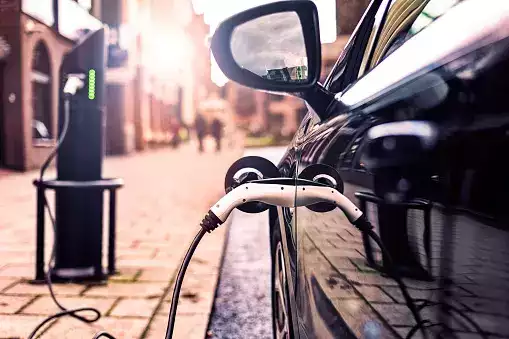
Electrification of India’s 2, 3-wheelers fleet require $285-bn financing: WEF – EQ Mag
The complete electrification of India’s entire fleet of two and three-wheelers require financing to the tune of $285 billion (nearly ₹23 lakh crore), said the World Economic Forum (WEF) paper on 1 December.
The new WEF’s white paper, published in collaboration with NITI Aayog, said the last-mile and urban delivery fleets are leading the adoption of electric two-and three-wheelers in India. It added that they are likely the first segments to transition completely to electric.
However, higher upfront cost of acquisition, lack of confidence in new technology, unassured reliability, and unestablished resale value are few reasons for which driver-cum-owners are hesitant to make the transition to electric, the white paper said.
In India, two -wheelers and three-wheelers account for over 80 per cent of vehicle sales and the adoption of electric vehicles has been steadily rising in the past few years.
There are about 45 certified vehicle manufacturers of electric two-and three-wheelers in Indiaand the cumulative sales of these vehicles have reached an impressive 10 lakh units., said the report.
However, this remains a small portion of the country’s total two-and three-wheeler fleet stock of 25 crore, leaving immense room for sustained growth.
“Achieving 100 per cent electrification of India’s two- and three-wheeler stock requires a capital allocation of approximately $285 billion,” the WEF said.
The WEF said that the overall stock of two and three-wheelers to grow to 27 crore.
Capital cost for its transition to electric is calculated based on an average two-wheeler vehicle cost of $1,000 (over ₹81,000) for 26.4 crore two-wheelers and an average three-wheeler cost of $3,500 ( ₹2.8 lakh) for 60 lakh three-wheelers (across vehicle categories, excluding e-rickshaws), bringing the overall capital cost to approximately $285 billion.
Electric vehicle turnover rate and cost of infrastructure have not been taken into consideration – and will require additional financing, it said, adding, despite electric vehicles (EVs) are costlier to purchase, their running cost is much lower.
But for a rapid transition of fleets, capital flow to the ecosystem needs to grow multi-fold and opening large capital pools will require de-risking of the market through deeper collaboration between stakeholders and business model innovation, the WEF said. It also said a long-term policy roadmap is needed to attract greater investments.
While purchase incentives by governments have been key drivers for the adoption of EVs, a policy roadmap for demand incentives beyond the current term of policies (usually up to 3-5 years) can help, the WEF said.
While incentives will need to be phased out eventually, a roadmap with timelines for a gradual phaseout can help support new corporate investment decisions, it added.
This can further be supported by an ambition for a combustion engine phaseout date for new two- and three-wheelers, the WEF said.


















